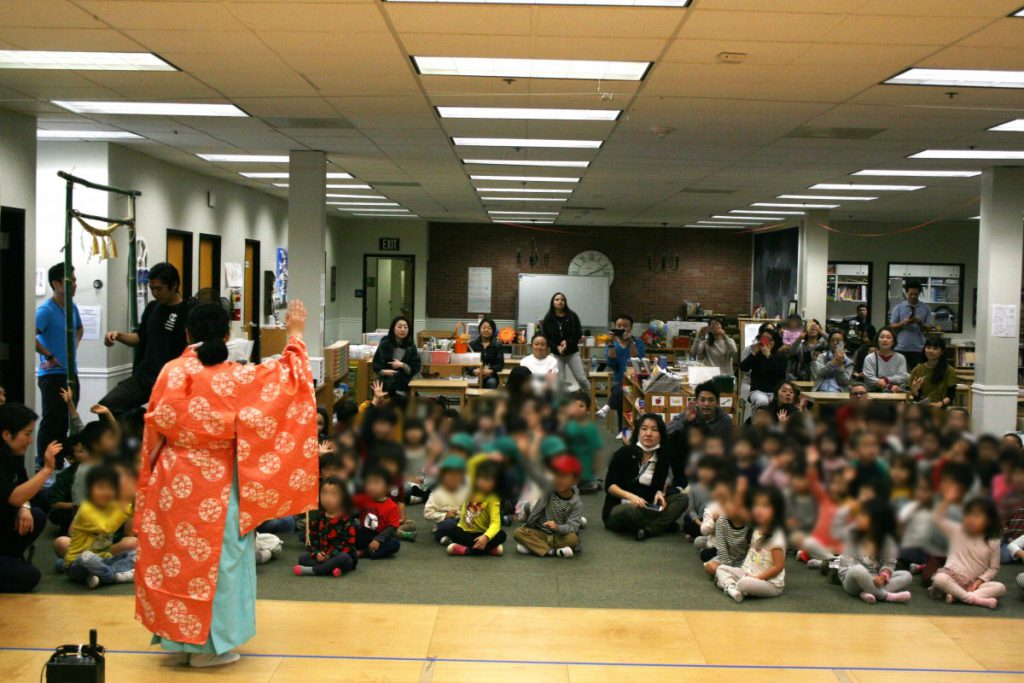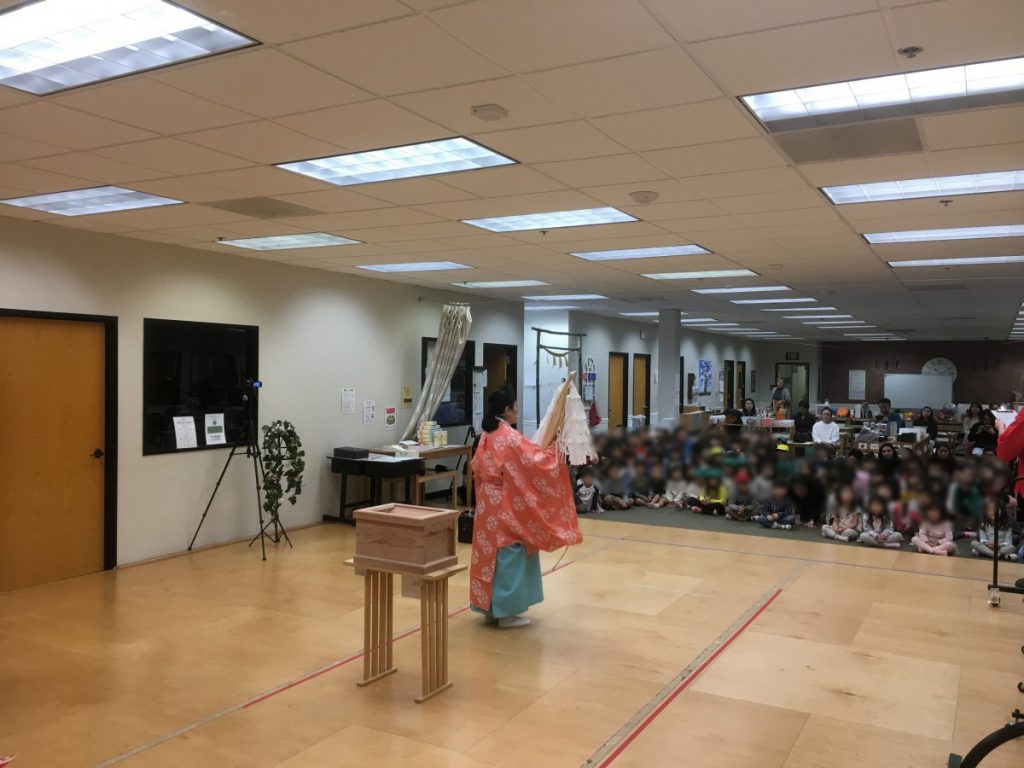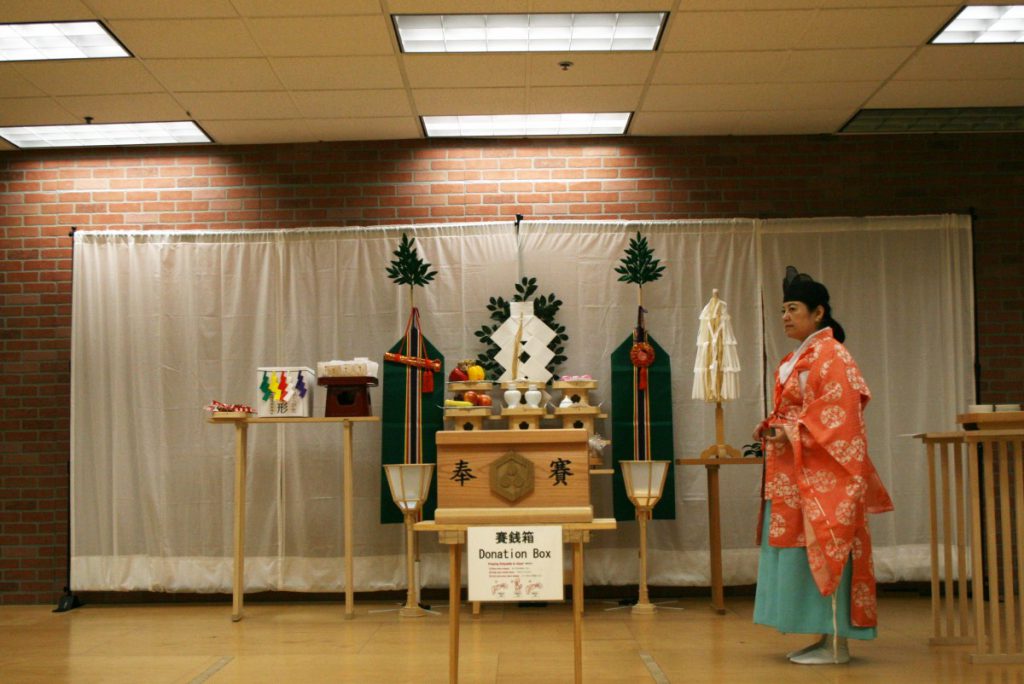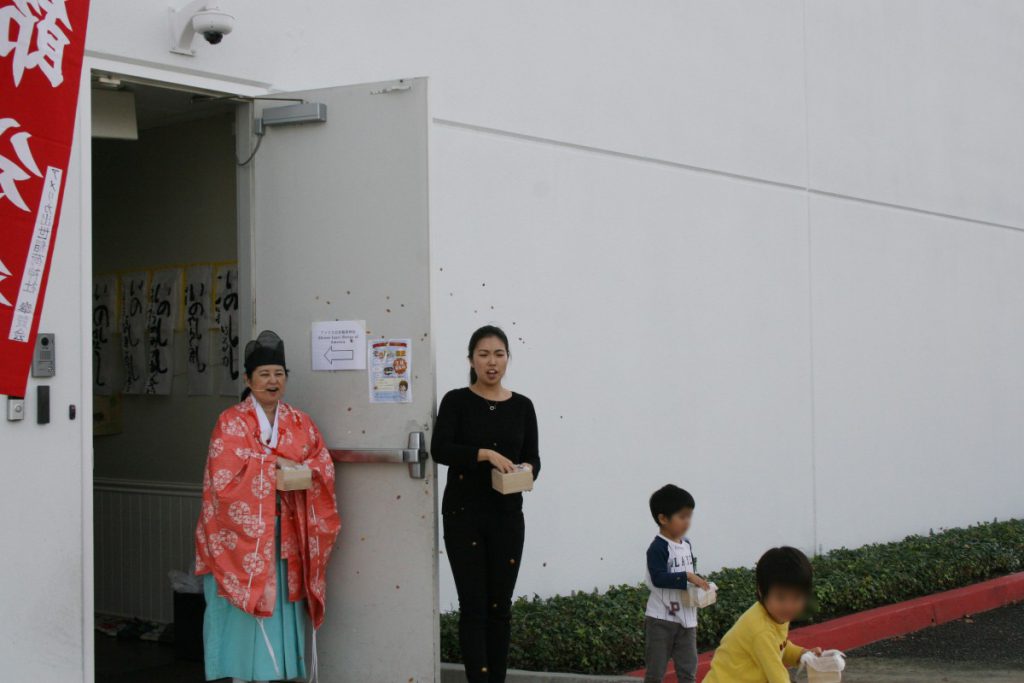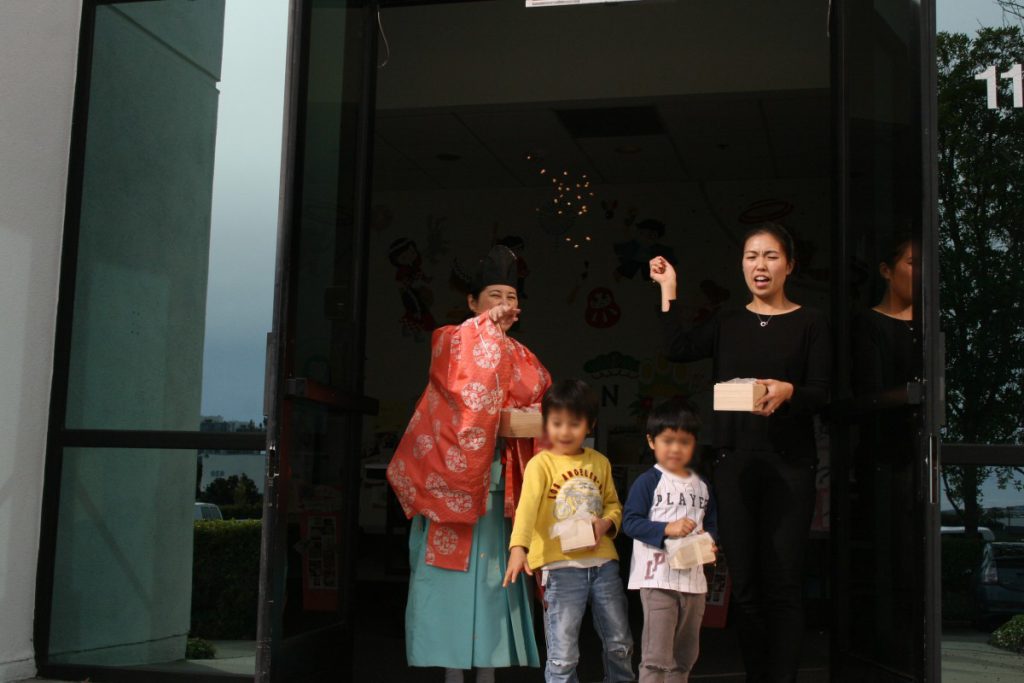We held Setsubun-sai on Friday, February 1st at Montessori International Academy (2717 South Halladay Street, Santa Ana, CA 92705). After the ceremony, we provided Setsubun-no-Harai and Yakubarai for Yakudoshi (critical year) ceremonies.
We also provided traditional ritual ceremonies for purifying and recharging the spirit. Please see below.
And we provided Gokitoh ceremony of Yakubarai for Yakudoshi (critical year) people.
About Setsubun
The original meaning of Setsubun is “dividing season,” and the beginning of each of the four seasons was called Setsubun. However, the day before the first day of spring in the lunar calendar is New Year’s Eve, and as it marks the seasonal change from harsh winter to spring, it came to be considered an especially important day. During the Edo period, Setsubun came to exclusively mean the day before the first day of spring. This year, the first day of spring is actually February 4th, making Setsubun February 3rd, but we held Setsubun-sai on February 1st due to venue availability. We hold this Setsubun ceremony to show respect and appreciation and present our wishes to the nature spirits. This ceremony is free to attend.
About Sestubun-no-harai (Purify and recharge your spirit for The New Year).
This is a very traditional ritual ceremony that has been passed from generation to generation for many years in Shusse Inari Shrine. This ritual is centered around the use of Hitogata. From ancient times, the Japanese people have prayed for purification, and to be rid of the previous year’s Kegare. New Year’s rituals are for cleansing and refreshing of energy for their spirit. Kegare, or “withered spirit”. Over the course of the year, the energy of a person’s spirit is diminished by tiredness, stress, and other pressures, so New Year’s rituals are performed to cleanse and refresh this energy and recharge the spirit.
We distribute Hitogata at the Setsubun-sai venue, so please let us know if you are interested in this ceremony. Please reference our flyer for more detail about Hitogata.
The Hitogata is a minimum $10 donation in advance per participant (including the ritual ceremony fee) Note: Attendance of this ritual ceremony is not required.
About Yakudoshi
Over the many years of a person’s life, many changes may take place in their body and/or environment. As a result, it is said there is a risk of meeting with misfortune. Years in which there is an increased chance of misfortune are called Yakudoshi, meaning “Critical Years.” It is apparent from historical texts that Yakudoshi already existed as a custom during the Heian Period in Japan (794 CE – 1185). However, Yakudoshi are not the only years that one needs to take into account. In addition to the designated critical year (or “Hon-Yaku”), the year before a critical year (“Mae-Yaku)”, and the year after (“Ato-Yaku)”, also require careful attention in order to avoid misfortune. For this reason, it is necessary to think of Yakudoshi as a three-year period. During this three-year period, people go to Shinto Shrines in order to receive prayers from priests to ward off evil and to cleanse themselves of its influence. People also pray to purify their bad luck, and for good luck charms to bring about better fortune.
It is said that Yakudoshi begins from first day of spring, so it is customary for people of Yakudoshi age to receive Yakubarai (purification) ceremony on that day. The Yakudoshi ages for women are 18, 32, and 36, and for men are 24, 41 and 60. We provid Yakubarai ceremonies for Yakudoshi. An appointment is required for the Yakubarai ceremony, please contact us to schedule. The Yakudoshi ceremony fee is minimum $60.
